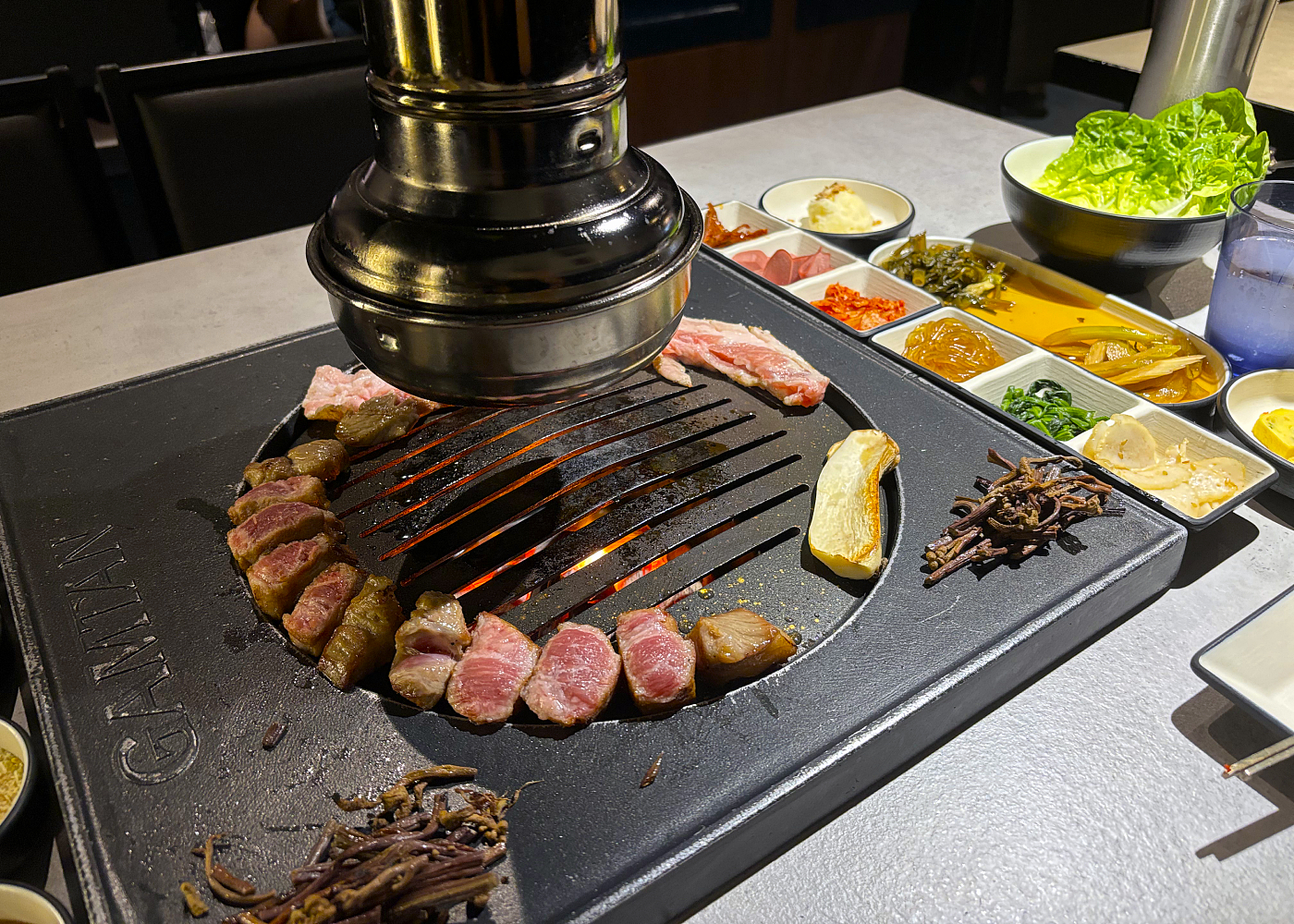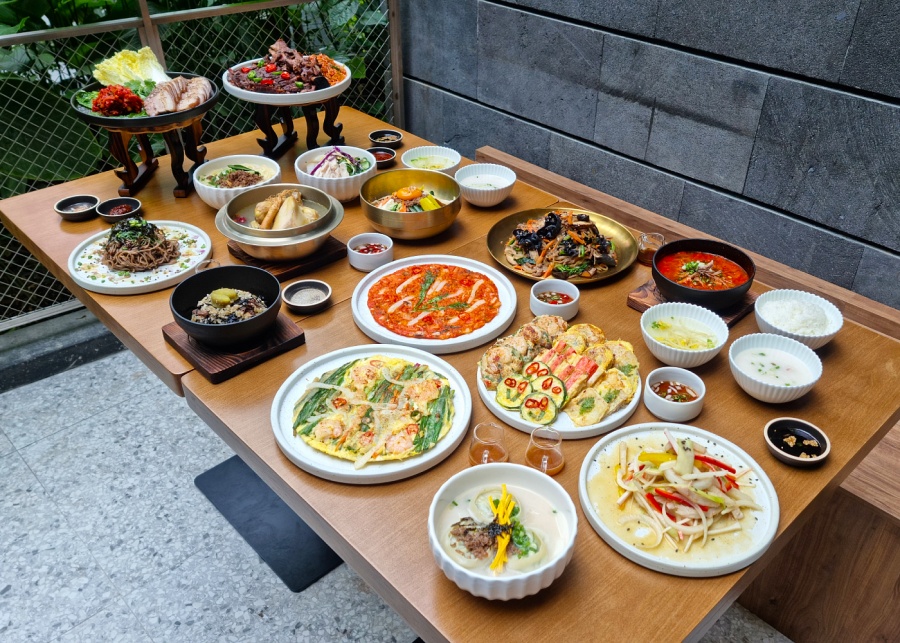
Gwangjang Gaon in Jewel Changi Airport promises halmeoni-style comfort with a high-end twist – we tried it all.
You can easily find Korean restaurants in Tanjong Pagar, but if you’re at Jewel Changi Airport and craving Korean cuisine, hit up Gwangjang Gaon. The restaurant boasts two flagship outlets in South Korea and is a hit among celebrities like actress Han So Hee and Squid Game’s Lee Jung Jae. And it has finally launched its first overseas outpost in Singapore. But what makes this new Korean food spot stand out among its competitors?
I discovered during my visit with my colleague that Gwangjang Gaon brings the soulful warmth of a halmeoni’s (Korean grandmother’s) cooking, albeit with a modern, high-end price tag.
Gwangjang Gaon review: Details at a glance
Best for: Korean food connoisseurs and large groups
Must-try items: Modm-Jeon; Gaon galbi
How much: Food from $16.90; drinks from $4.50
Opening hours: Daily, 11am to 10pm (No reservations needed, walk-ins welcome)
Address: Gwangjang Gaon, #02-243, Jewel Changi Airport, 78 Airport Boulevard, Singapore 819666
The brains behind the award-winning restaurant
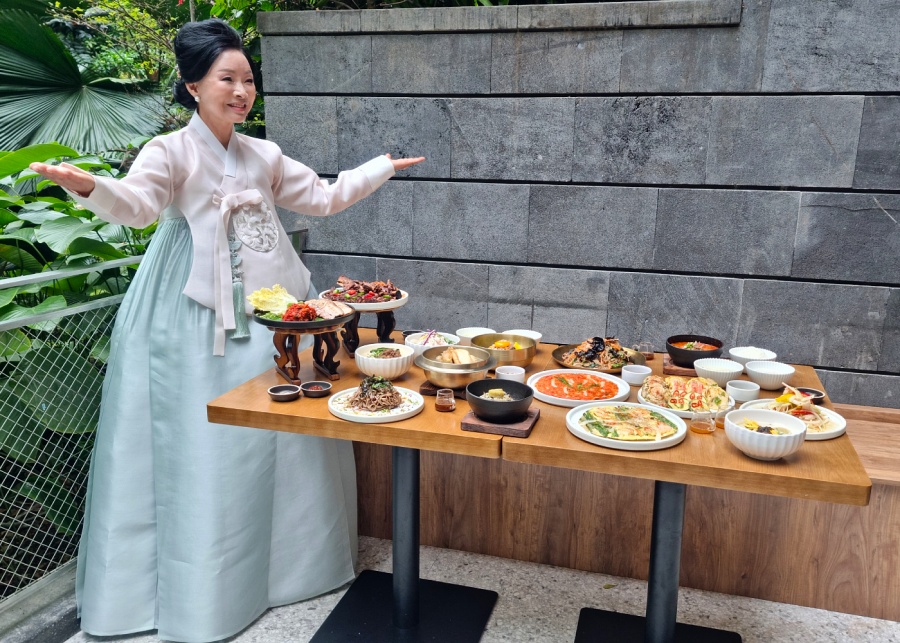
Gwangjang Gaon was founded by Professor Hyo Soon Park, a well-known researcher of traditional Korean cuisine and culinary expert. She’s appeared on countless cooking shows and taught at various Korean universities. Nowadays, Professor Park is all about standardising traditional recipes while ensuring everything tastes healthy yet delicious. Think of her as the doting halmeoni who’ll serve you a piping hot bowl of samgye-tang if you tell her you’re feeling under the weather.
Since its opening in April 2008, the restaurant has garnered plenty of accolades, including this year’s Blue Ribbon (Korea’s version of the Michelin Guide) recognition and a listing in the Hi Seoul Best Korean Restaurant. Yes, this isn’t your typical traditional Korean restaurant – it has prestige written all over it.

Gwangjang Gaon’s first Singapore outpost is situated in a prime location at Jewel Changi Airport, offering diners an exceptional view of the garden and the waterfall. While this might sound great in theory, the constant rush of the waterfall initially made conversation a little challenging for me. However, I eventually tuned it out as the delicious spread captured my attention.
The restaurant itself, however, leans into traditional vibes with its warm rustic wood furniture and gleaming brass cutlery that I was super tempted to take home with me. The open seating accommodates couples and groups of four, while the private booths are perfect if you want something a little more… atmospheric.
Our table picks (and one regret)
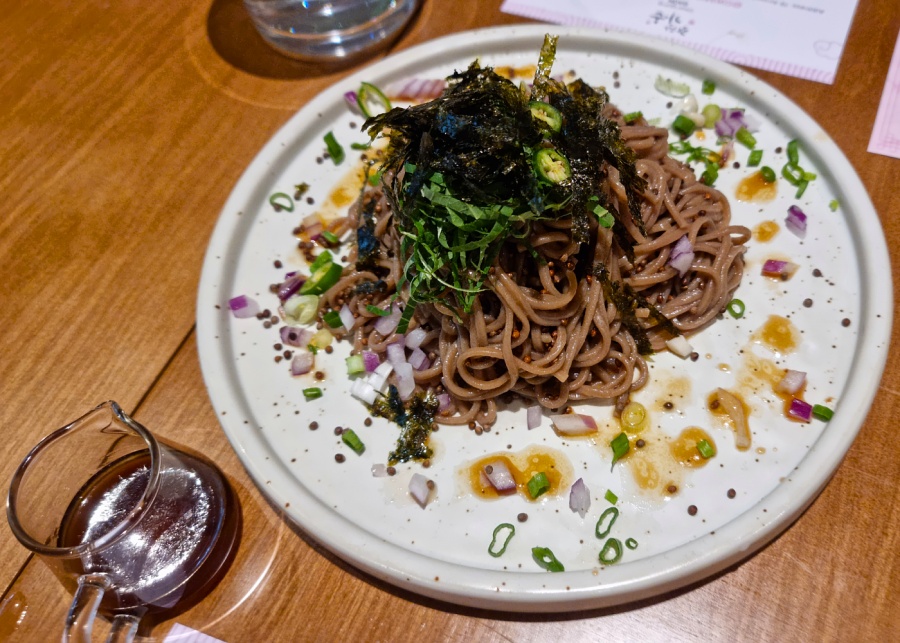
My meal kicked off with the chogye-nangche ($18.90), a cold Korean chicken salad with vinegar and mustard dressing. It’s a surprisingly refreshing dish, buoyed by the tangy sauce. A note of caution: the dressing can get overwhelming. It went up my nose (kinda like how wasabi does if you add too much to your soy sauce), but that’s something I’m willing to overlook. We’re off to a good start.
Next comes the deulgireum maguksu ($21.90): cold buckwheat noodles drizzled with perilla oil and topped with crunchy perilla seeds. Here’s where I encountered my first roadblock. The dish had a cardboard-y aftertaste (as if I’d just chewed on some wet paper) after I swallowed a handful of the noodles. “Maybe that’s how buckwheat tastes,” I told my colleague, though I didn’t even convince myself after those words escaped my mouth. I suggest skipping this for the next one.
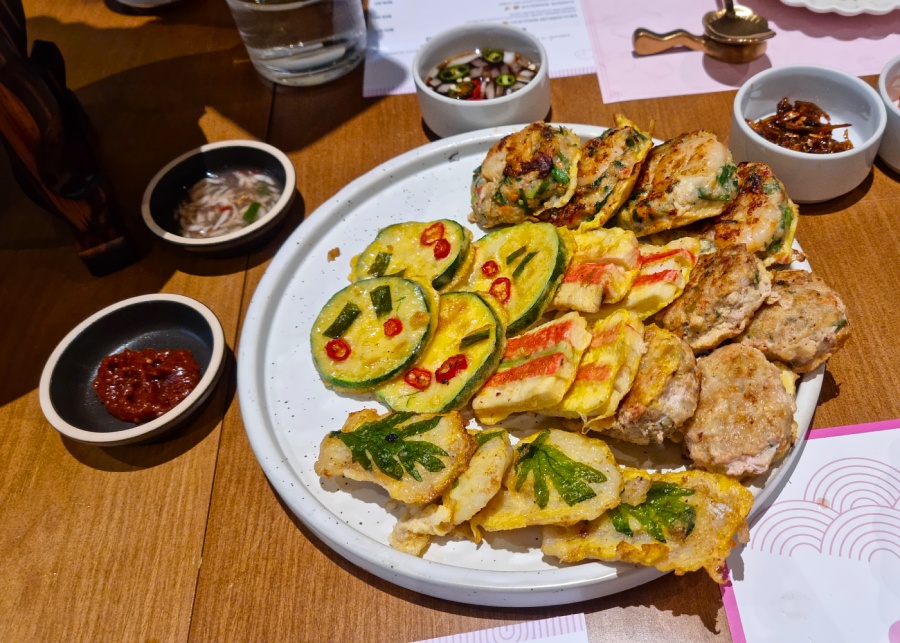
Modm-jeon ($29.90) is an assorted Korean pancake platter filled with shrimp, pollack, zucchini, ground pork, and crab surimi, served with soy-vinegar dipping sauce. You should hear the oohs and ahhs from us when the beautifully arranged dish was placed on our table. Out of all the ingredients, both of us loved the zucchini – the thin fritters absorb the sauce really well. I also like the shrimp, which has a good bite, while my colleague prefers the crab. This platter is perfect for sharing as it can cater to everyone’s palate.
Go big or go galbi
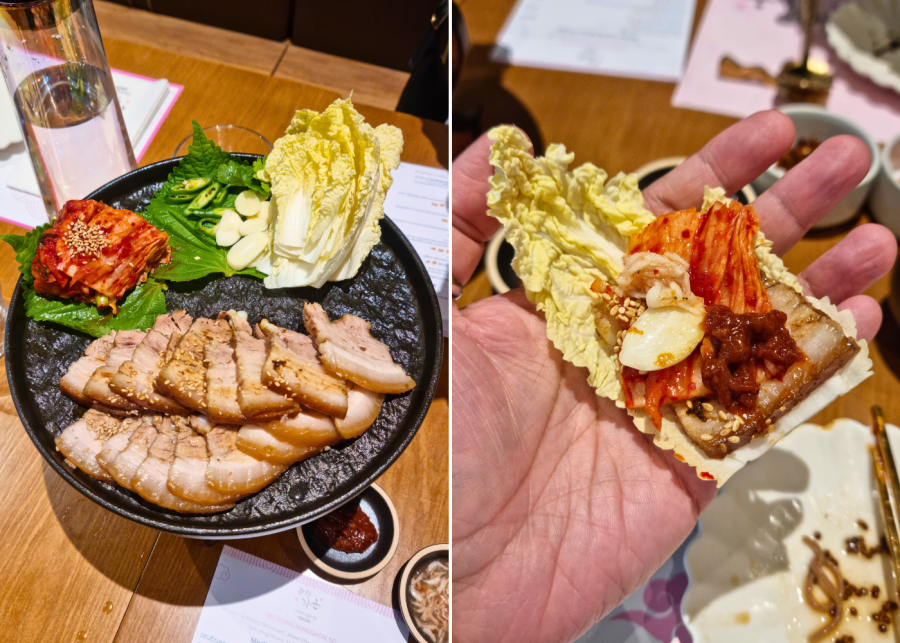
Gwangjang Gaon is famous for two signature dishes, and I’m lucky enough to have tasted both. The first is the bossam ($43.90), aka tender boiled pork wraps on a hojokban (traditional Korean wooden tray). The pork belly is gently boiled and simmered for several hours in a preserved broth, giving it a final aromatic complexity.
Unfortunately, the meat didn’t do much for me – I wasn’t blown away, nor was I compelled to finish the dish. I did, however, enjoy the homemade kimchi that accompanied the boiled pork. It’s tantalisingly spicy yet crunchy, and I could (and would rather) finish it on its own.
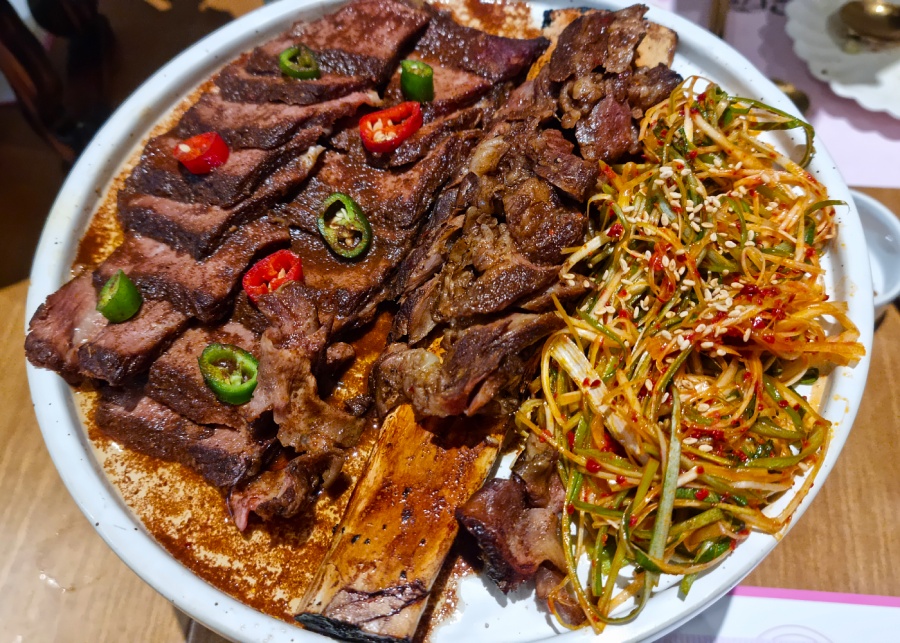
The bossam may have been a letdown, but I’m thoroughly satisfied with the Gaon galbi ($69.90). Picture premium short ribs that have been marinated with over 20 herbs and ingredients before being sous vide for over a day. The surface is lightly torched before the cooked ribs are served on a hojokban.
I love how the meat bursts with flavour the minute I pop it in my mouth: first from the char and smokiness, before the marinade completely engulfs my taste buds. I was over the moon. Bonus points to the accompanying shredded vegetables, a good respite if you’re all beefed out.
Halmeoni vibes, modern prices
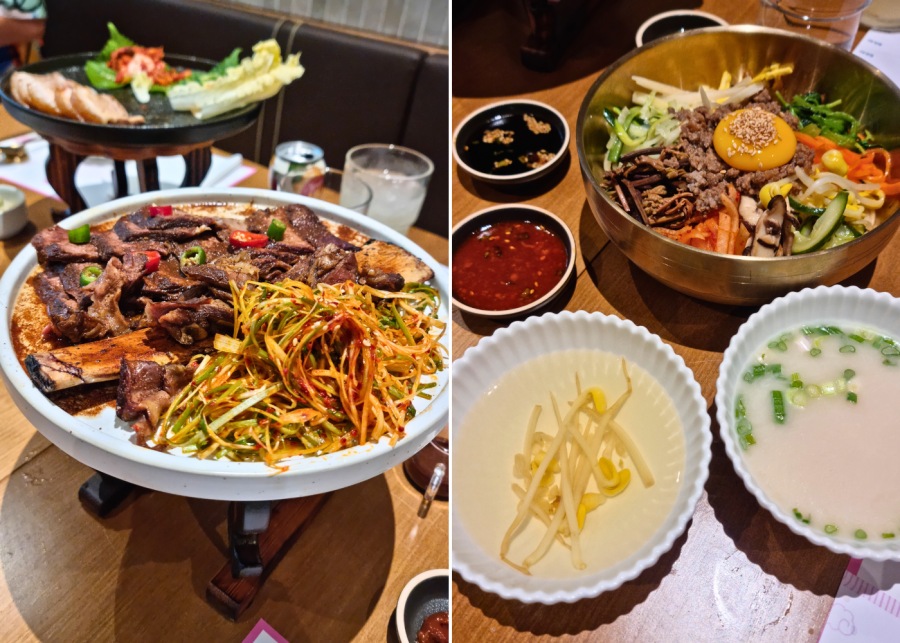
To sum up the experience? Think of it as your Korean grandma’s tasting menu – if she had a Blue Ribbon, cooked sous vide galbi, and served it on handcrafted wooden trays. It’s a healthy mix of hits and misses; I highly recommend the Modm-jeon and Gaon galbi. Just be prepared to shell out as this isn’t your average bibimbap joint.
Shoutout to the service: polite, efficient, and unfussy. No dramatic fanfare here, but the staff knows their stuff and keeps things moving without ever making me feel rushed.
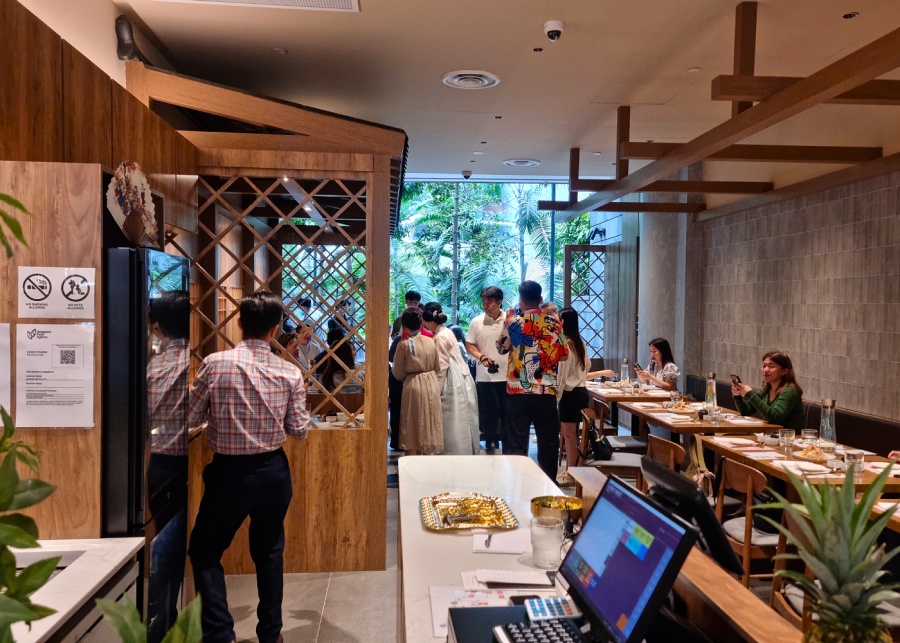
Having its first outpost in Jewel Changi Airport means half the population might give Gwangjang Gaon a hard pass. Still curious? Make a day of it: have a feast, stroll the dome, and end it on a sugar high. The restaurant doesn’t serve desserts, so you can work up an appetite (again) looking for sweet treats around the area. Oh, and check out the waterfall, of course.
Overall, Gwangjang Gaon is your spot if you’re looking for an elevated Korean dining experience beyond the usual BBQ joints, and are willing to splurge a bit for quality and authentic culinary heritage.
